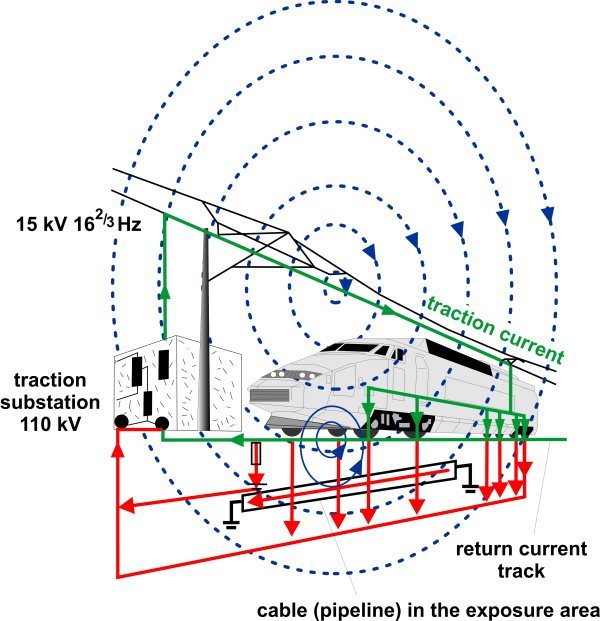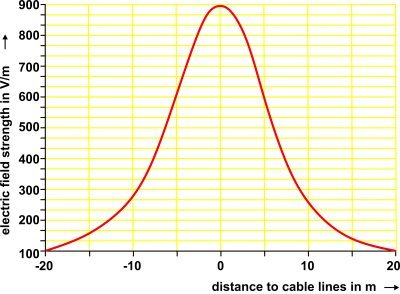Traction power system 16.7 Hz
The traction power system in Germany, Austria, Switzerland, Sweden and Norway is based on alternating current with the frequency of 16.7 Hz. The frequency used has historical reasons. In other European countries alternating currents with a frequency of 50 Hz or direct current are used. The traction power systems require their own ‘electricity world’ which is exclusively designed for this specific frequency encompassing high voltage distribution system and substations. In Germany, the train specific high voltage system of 110 kV includes about 7,900 km overhead power lines (DB Energie GmbH) connecting power plants, converter stations, substations and transformer stations with the 15 kV overhead catenary system for use by the electric traction systems (see figure). Reverse currents flow via the rails and the soil back to the traction substation.

The 15 kV overhead catenary power lines produce an alternating electric field. The figure shows the calculated electric field strength of a two-track railway. The maximal values of the electric field strength is directly located above the rails. The passengers in the railway carriages are shielded from the electric fields of the overhead catenary by the metal casing of the train (Faraday cage effect).

The magnetic field strength of traction power systems are subject to considerable changes in the course of the day. If there is no train travelling in a specific supply part of the trails, then no current is flowing and the magnetic field equals zero. However, if there are several trains in the same supply part at the same time, the current flow is increasing and therefore the magnetic field strength is correspondently stronger. For example acceleration leads to strong power consumption, therefore to higher magnetic fields. At night, with decreasing railway traffic the magnetic fields are considerably weaker.
Measurements can only determine instantaneous magnetic fields of the traction power system because the current flow is constantly changing. Simulation programs are applied to reliably assess magnetic field densities of traction power systems. Measurements and calculations showed that in striking distance of a railway track maximal values of 100 µT can occur for a short time. 24 h maximal values are between 1 and 10 µT (Federal Office for Radiation Protection, Germany).
More information are available at FOEN, p.34ff.
Typical measurement values are available in the database of exposure sources.